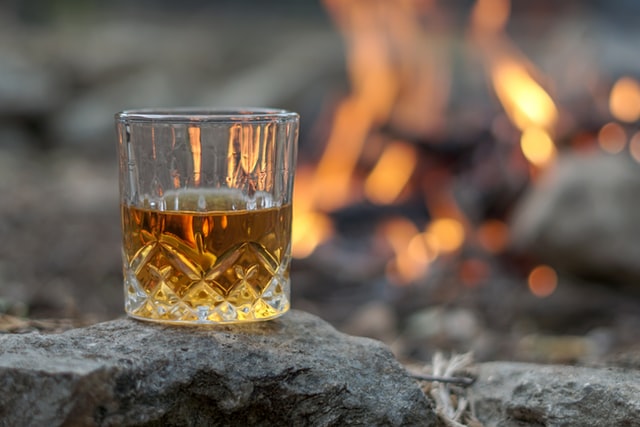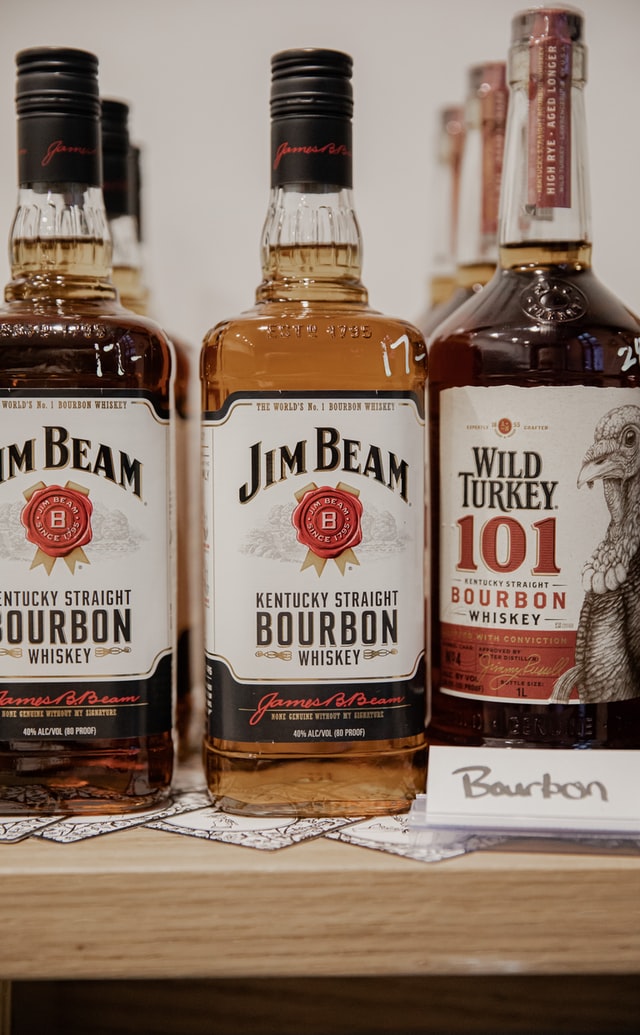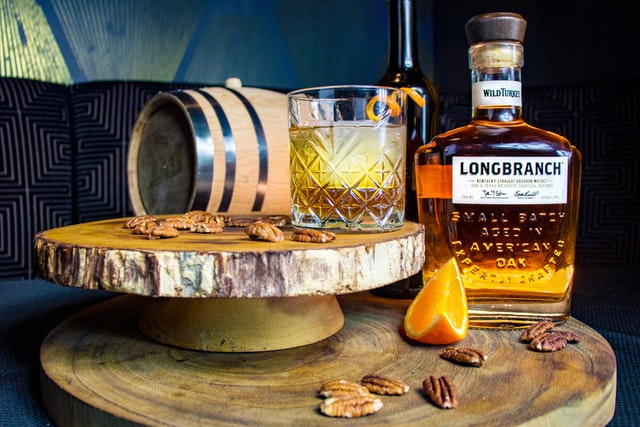3 Tips on Bourbon Whiskey- Very Few People Know
The earliest bourbon
For some reason, everyone seems to want to know the name of the first person to make bourbon. The truth is that no one knows. Baptist minister Elijah Craig is often credited as the "inventor" of bourbon, but there is absolutely no evidence for this claim. We do know that he was a whiskey distiller in the late eighteenth century, and that his whiskey may have been called Kentucky whiskey, or perhaps even bourbon, but there is no real evidence that he was the first to make bourbon. In fact, according to United Distillers archivist Mike Veach, it's more likely that Elijah Craig's name was used in the late 1800s to fight the Prohibition movement simply because he was a Baptist minister. Clever marketing has been around for thousands of years - and when distillers have to contend with forces that quote the Bible to advance their cause, what better way to do so than to claim that a good Christian was the "inventor" of bourbon?

Another bone of contention regarding Craig's theory is that because Craig never actually lived in Bourbon County (he was based a little west of the county line), some claim that this disqualifies him entirely from making the whiskey known as bourbon. However, for Craig's benefit, if "bourbon" whiskey had a good reputation in the South (and he did ship his whiskey there), he might have *called his product "bourbon" even though he wasn't there.
The search for the first bourbon should begin with a study of Kentucky to see what made this whiskey born there so perfectly. Kentucky is a region rich in trees (the state has 17 species of oak), pristine limestone filtered water, and arable land. So here we have the perfect place to make whiskey - corn was encouraged to be grown and thus became the primary grain, the water was perfect for distillation, and the settlers had plenty of wood available for barrel making.

These early Kentuckians had access to all the ingredients needed to make whiskey, but it's necessary to push back a bit when looking for the origins of a particular style of whiskey. before 1800, Kentucky whiskey was known as bourbon, but it's very unlikely indeed that we would recognize it as such today. In order to match the style of today's bourbon, we must be guided by today's standards. Bourbon must be aged for at least two years in charred oak barrels (folk may tell you it has to be white oak, but government specifications don't specify the type) and contain more corn than the sum of all the *other* grains used. So, to find the creator of bourbon, we must find the figure most likely to put them together. The corn issue is relatively easy: since corn is the dominant grain in the state, most Kentucky distillers are likely to use it to make whiskey. It's very economical. The aging factor requires more investigation. Whiskey has always been stored in barrels, but not always for very long, and not always in burnt barrels. Then there is the sour mash component.
Who burned the barrels?
The straight strips of wood used to form the barrels had to be heated in order to bend the wood into the familiar shape of a barrel. This shape is used primarily so that the straps holding the barrel in place can tighten around the wider middle section of the barrel, thus pushing the staves closer together and creating a watertight - or whiskey-tight - seal. Since ancient times, winemakers have formed barrels over a fire, thus "toasting" the staves as they make them. Wines were aged in toasted barrels; in fact, bourbon barrels were toasted before they were charred. A popular anecdote is that a careless distiller accidentally set his staves on fire and conveniently "forgot" to tell the distiller who purchased the barrels about this unfortunate event. The whiskey maker noticed an improvement in his drink, figured out what had happened, and from that day on, the burnt barrel was favored by the whiskey maker. This is just an old story, but there may be a grain of truth in it.

The truth is that distillers needed to store their whiskey in "tight" or leak-proof barrels, and at the time, tight barrels were used to store almost everything from water to molasses to linseed oil to tar. Tight barrels were valuable and recyclable, and used barrels were cheaper than new ones. Perhaps as a matter of practice, distillers who invested in used barrels would light them on fire inside to remove any lingering odors or dirt, and at some point, charred barrels were again considered good for whiskey.
A book in Louisville's United Distillers archives mentions burnt barrels, but unfortunately the cover is missing and no date is printed on the pages - only a handwritten note which mentions 1854. The book is filled with questions and answers about many different topics, one of which is." Q: Why were the interiors of the barrels and casks charred? A: Because charring the inside of the barrel turns it into a kind of charcoal; and charcoal (by absorbing impurities from animals and plants) keeps the wine [liquid] sweet and good." But this document, assuming that the 1854 date is within 50 years of the date of publication, is a 19th century document. Were burnt barrels being used prior to this date? Quite possibly, but it is very unlikely that they were used by only one winemaker.
Down the river in a flat-bottomed boat
At the end of the 17th century, when a distiller made whiskey, he wanted to sell it as soon as possible. The distiller needed the money, and the rest of the town needed the whiskey to eliminate the dangers of living in new territory, surrounded by indigenous people who seemed to think they had a right to live on their own land. So when do whiskey makers start aging their products? After the whiskey has spent time in the barrel, it seems to be sleeping, but in reality it is growing. Its body gets bigger, its soul develops character,* and the sharp, childish bite of young, unfinished whisky turns into a deep, brooding declaration of maturity. There must have been some people who stored whisky who found that it got better with time, but despite this, the choice to leave whisky "in the wood" so that it could mature did not become commonplace until sometime in the early to mid 19th century.

The theory that whiskey improved with time was proven after one whiskey maker tasted his product downstream to New Orleans. French botanist François André Michaux, in Voyage à l'ouest des monts alléghanys, dans les états de l'Ohio, du Kentucky, et du Tennessee) explains that because he missed the high water season in the spring, he had to travel about 80 miles overland before boarding a boat in Pennsylvania that would take him to Kentucky. This was a typical situation at the time. Boats from Pennsylvania, Kentucky and Tennessee would wait for the river to rise before embarking on the trip downstream. In those days (until recently), most distilling took place in the cool fall months, right after the crops were harvested, and whiskey people had to wait until spring to start their flat-bottom boats. So if the whiskey was produced in September or October and didn't start shipping to the "Big Easy" until April, it might have been eight to nine months old by the time it arrived on Bourbon Street. Certainly not enough time in the wood to fully soothe its soul, but no doubt enough time for the whiskey to gain some color and mature enough for the drinker to notice the difference.
In the latter half of the eighteenth century, John Rich and Elijah Craig were both shipping whiskey to New Orleans in flat-bottomed boats, and they may not have been the only ones. However, whether they transported their product in burnt barrels is highly debatable; all we know is that this particular practice became popular for the next fifty years or so.

However, there is conclusive evidence that by the mid-19th century some whiskeys were aged long enough to give them the proper color. In an 1854 personal reminiscence by Lincoln and Douglas, James S. Ewing referred to a pot of red, and "red spirit" was a term for bourbon that would come into widespread use by the end of that century. When whiskey was first distilled, it was clear - it looked exactly like vodka. Only time in the wood gives it color, and only time in the charred wood produces the characteristic reddish hue of bourbon. Thus, we can conclude from Ewing's reference to red wine that some whiskey was being aged in charred wood barrels in the mid-19th century, and that it was aged long enough to give it the characteristic crimson hue of bourbon.
If you want to learn more about whiskey, you can click bolded words.
Editor: Rubick L.

 EN
EN  ES
ES RU
RU PT
PT JA
JA DE
DE TR
TR FR
FR TL
TL RO
RO KO
KO AR
AR BG
BG HR
HR CS
CS DA
DA NL
NL FI
FI EL
EL HI
HI IT
IT NO
NO PL
PL SV
SV CA
CA IW
IW ID
ID LV
LV LT
LT SR
SR SK
SK SL
SL UK
UK VI
VI SQ
SQ ET
ET GL
GL HU
HU MT
MT TH
TH FA
FA AF
AF MS
MS SW
SW GA
GA CY
CY BE
BE IS
IS MK
MK YI
YI HY
HY AZ
AZ EU
EU KA
KA HT
HT UR
UR BN
BN BS
BS CEB
CEB EO
EO GU
GU HA
HA HMN
HMN IG
IG JW
JW KN
KN KM
KM LO
LO LA
LA MI
MI MR
MR MN
MN NE
NE PA
PA SO
SO TA
TA TE
TE YO
YO ZU
ZU MY
MY NY
NY KK
KK MG
MG ML
ML SI
SI ST
ST SU
SU TG
TG UZ
UZ AM
AM CO
CO HAW
HAW KU
KU KY
KY LB
LB PS
PS SM
SM GD
GD SN
SN SD
SD FY
FY XH
XH